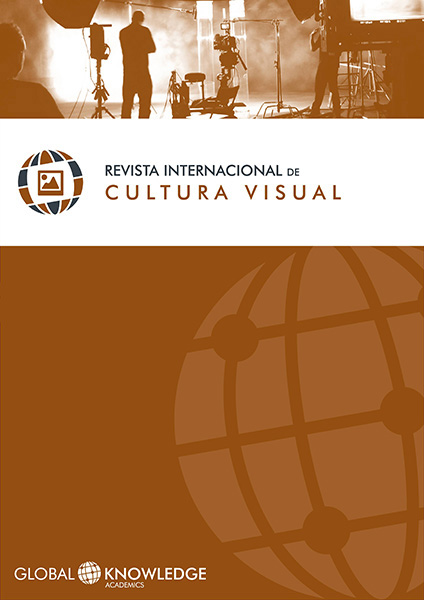Can abstract painting elicit emotions?
DOI:
https://doi.org/10.37467/gka-revvisual.v5.1737Keywords:
Abstract painting, Kandinsky, Aesthetic Emotion, Measurement of Emotions, Psychophysiological Measure, Psychogalvanic ResponseAbstract
The objective of this research is to verify, by an empirical methodology, the existence of an emotion that we have called aesthetics using for it paintings by Kandinsky. The selection of abstract works as stimuli is determined by the fact that they are the formal elements (shape, colour, lines) what constitutes the composition of the works in which there is no reference evocative, as they have no visual references of the real world. Our results indicate that the stimuli used cause alterations in the psychogalvanic response indicates there has been an emotion developed in line with the proposals by James.
Downloads
Global Statistics ℹ️
|
691
Views
|
429
Downloads
|
|
1120
Total
|
|
References
Arnold, M., Emotion and Personality, Columbia University Press, New York, 1960.
Darwin, C. (1872). La expresión de las emociones en los animales y en el hombre. Madrid: Alianza.
Ekman, P., & Friesen, W. V. (1978). Facial action coding system: Investigator’s guide. Palo Alto, California: Consulting Psychologists Press. DOI: https://doi.org/10.1037/t27734-000
Fernandez-Abascal, E. G., Rodriguez, B. G., Sanchez, M. P. J., Diaz, M. D. M., & Sanchez, F. J. D. (2010). Psicología de la emoción (4.a ed.). Madrid: Editorial Universitaria Ramon Areces.
Goodman, N. (1976). Los lenguajes del arte: aproximación a la teoría de los símbolos (2010.a ed.). Barcelona: Paidós.
James, W. (1884). What is an emotion? Mind, 9, 188-205. DOI: https://doi.org/10.1093/mind/os-IX.34.188
Kolb B, Whishaw IQ. Neuropsicología humana. Madrid: Panamericana; 2005.
Lang, P. J. (1977). The application of psychophysiological methods to the study of psychotherapy and behavior modification. En A. E. Bergin & S. L. Garfield (Eds.), Handbook of Psychotherapy and Behavior Change (pp. 75-125). New York: John Wiley & Sons Inc.
Lang, P. J. (1979). A Bio-Informational Theory of Emotional Imagery. Psychophysiology, 16(6), 495-512. https://doi.org/10.1111/j.1469-8986.1979.tb01511.x DOI: https://doi.org/10.1111/j.1469-8986.1979.tb01511.x
Lang, P. J., Bradley, M. M., Fitzsimmons, J. R., Cuthbert, B. N., Scott, J. D., Moulder, B., & Nangia, V. (1998). Emotional arousal and activation of the visual cortex: an fMRI analysis. Psychophysiology, 35(2), 199-210. DOI: https://doi.org/10.1111/1469-8986.3520199
Lang, Peter J., Bradley, M. M., & Cuthbert, B. N. (2008). International affective picture system (IAPS): Affective ratings of pictures and instruction manual. Technical report A-8. Recuperado a partir de http://www.citeulike.org/group/13427/article/7208496
Lazarus, R.S. (1994). Pasion and reason: Making sense of our emotions. Nueva York: Oxford University Press.
Schachter, S. (1962) With J. Singer. Cognitive, social and physiological determinants of emotional state. Psychol. Rev. 69 :379-399. DOI: https://doi.org/10.1037/h0046234
Skinner, B. (1977). Sobre el conductismo. Barcelona: Fontanella.
Vygotsky, L. (2006). Psicología del arte. Grupo Planeta (GBS).
Watson, J.B.(1913). Psychology as the behaviorist views it. Psychological Review, 20, 158-177. DOI: https://doi.org/10.1037/h0074428
Downloads
Published
How to Cite
Issue
Section
License
Those authors who publish in this journal accept the following terms:
-
Authors retain copyright.
-
Authors transfer to the journal the right of first publication. The journal also owns the publishing rights.
-
All published contents are governed by an Attribution-NoDerivatives 4.0 International License.
Access the informative version and legal text of the license. By virtue of this, third parties are allowed to use what is published as long as they mention the authorship of the work and the first publication in this journal. If you transform the material, you may not distribute the modified work. -
Authors may make other independent and additional contractual arrangements for non-exclusive distribution of the version of the article published in this journal (e.g., inclusion in an institutional repository or publication in a book) as long as they clearly indicate that the work was first published in this journal.
- Authors are allowed and recommended to publish their work on the Internet (for example on institutional and personal websites), following the publication of, and referencing the journal, as this could lead to constructive exchanges and a more extensive and quick circulation of published works (see The Effect of Open Access).













